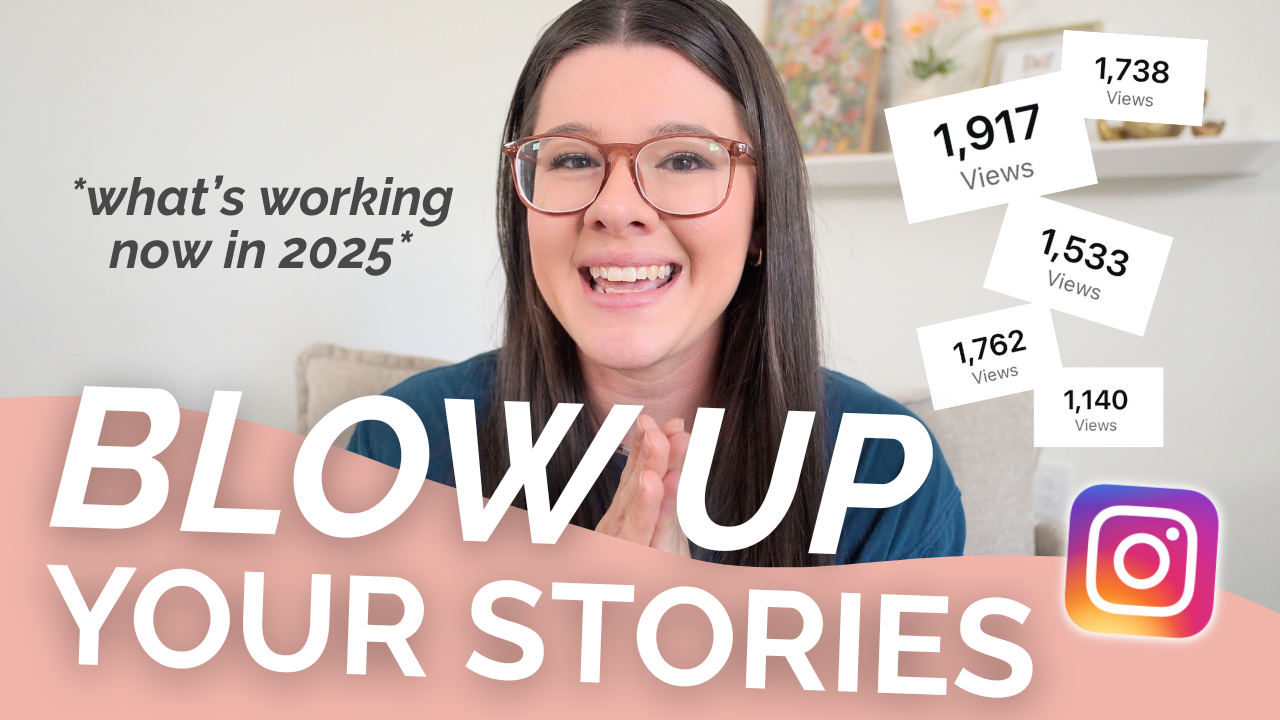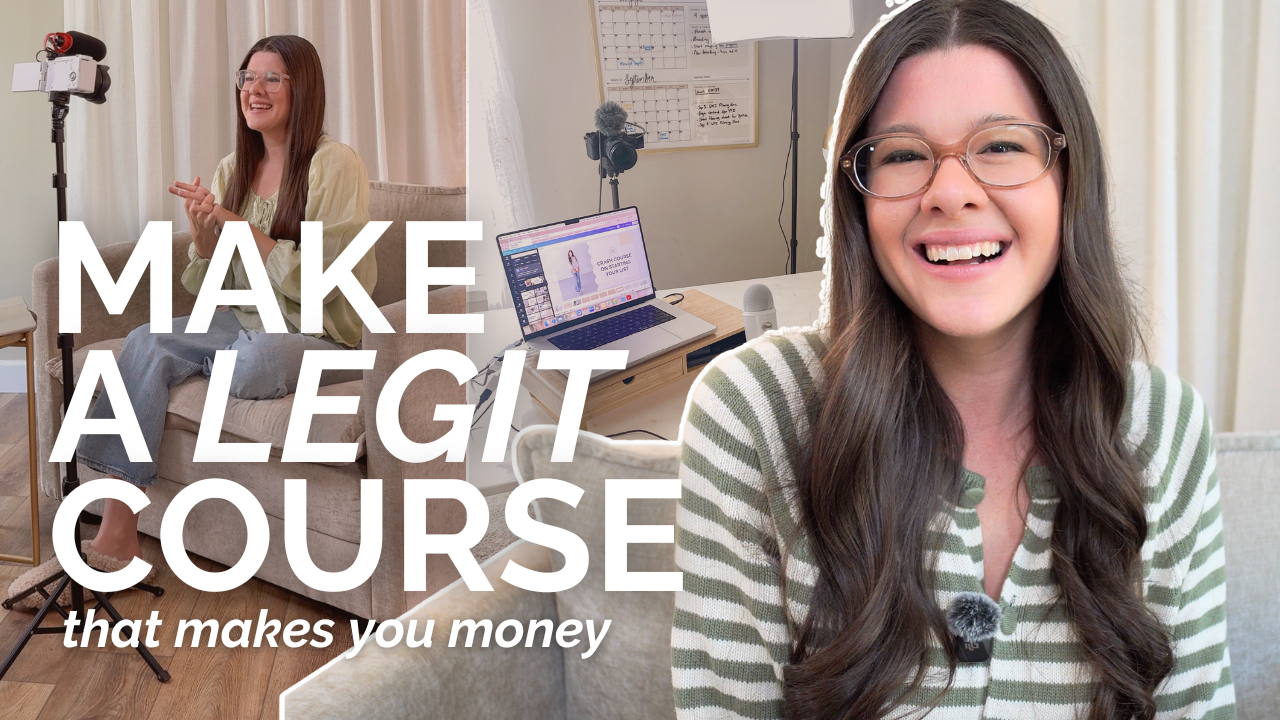Today we’re going to be talking about three things you need to know if you want to create passive income. Whether you’re a brand or business, if you’re interested in creating passive income for yourself, there are three things you should know before your get started. I also want to break down what passive income really means and what it can entail, as well as how to add it to your existing business without a lot of stress. So let’s jump in!
What is passive income?
You might have heard the term “passive income” and think it sounds like making money in your sleep. I mean, that sounds pretty nice, right? I would stay that’s not a totally accurate definition, so I like to think of it more as scalable income. To me, passive income is something that’s easy to scale and make more money without you having to put a lot of time into it regularly. So, it’s very different from client work or even something hourly. A lot of times, it’s digital products or affiliate income. Think of it like this: once you have this product setup, you don’t have to spend a lot of time managing that item. It’s easy to scale it and make more money without more of your time.
Understanding passive income isn’t passive up front.
While passive income requires LESS of your time, it’s not totally something that you’ll never put time into. When you first get started, there’s a lot of upfront work including design, marketing, and backend systems. Once they’re established, you still have to spend time managing those systems. For my business, our passive income comes from our digital products, online courses, affiliate links, and affiliate partnerships. Those are things that are easy to scale without me doing a ton of work once they’re established. Passive income is one of those things that the amount you make isn’t directly correlated to the time spent (like working hourly or with a client).
For example, when I created the Reels Mini Course, I spent 40+ hours creating the course from outlines, filming, creating slides, the workbook, uploading it and such. At the time, I didn’t have Maggie onboard so I had spent countless hours doing that setup and then engaging with our students. This took a lot of my time but had no direct impact on how much we’ve made. Now, we still have to manage some of those things – monitoring our Facebook group, updating modules as new information comes out, etc. As you can see, it’s not a totally passive endeavor. I truly believe in keeping my products up to date and having stellar customer service. Because of that, our team still puts energy and effort into the product.
Marketing passive income matters.
Beyond actually creating and managing the products, there’s also another side to passive income: marketing. Generating new leads, coming up with new strategies for email marketing, and creating sales funnels are all super important for passive income. We want to create a system that brings someone into our email list where they’ll then be pitched our product(s). Once this system is created and automated, we don’t have to do much unless we’re running a sale. But, generating those leads IS something we still have to do regularly.
Over the last few years, supporting our audience has made a huge difference in bringing in leads and paying customers. From our earlier shop products to YouTube videos, and now our Facebook groups, finding ways to show that you know your stuff and can be trusted is huge when trying to generate new leads!
Passive income requires a mindset shift.
If you’re a business owner who does regular client work (coaching, photography, etc.), you have to realize that when you switch to passive income, nothing you do on a regular basis is tied directly to your income. For example, when I was a photographer, I knew if I booked X number of clients, I’d make a certain amount of money. But with passive income, it’s not like that. If I make 4 YouTube videos this month, it doesn’t guarantee I’ll make a certain amount of money. That’s a big mindset shift to make. At the same time, that’s where the freedom of passive income becomes important.
This has required us to pay more attention to our money. I’ve talked about it before, but reading Profit First completely changed my business finances (and my life). Basically, you have 5 different bank accounts and everything that comes into your business gets split into those 5 accounts based on percentages. This book helped me get more serious about my finances, which was important as I pivoted into more passive income in our business.
Getting Started with passive income…
If you’re in the beginning stages of your business, you could start a blog or YouTube channel to start generating income. But, honestly, I believe that starting with client work and then pivoting into passive income is the way to go. You can learn more about your ideal audience that way and it will make the whole journey a bit easier.
When you’re ready to get started, passive income should come from serving your audience. Think about what’s worked well in your business or for your customers. Then, determine how you can turn that into a product that would still benefit them. When I began with passive income, I created presets. I was a photographer and people liked the edits on my images. From that, I made $10K. The same thing happened with my Reels Mini Course. I began sharing a lot about Instagram and the features, realized I loved teaching about it and you all loved it!, too Because of that, I went and created the actual course and now it’s one of our biggest sellers.
I hope that this episode has been helpful and answered some of your questions about getting started with passive income! I’m so excited to see what each of you build in your own business.
If you’re listening and you have ideas about what to talk about next, please send in your requests! I really do want to know what you want to hear about in future episodes. Email me at [email protected] with your questions!! I can’t wait to hear from you! Don’t forget to leave us a review on Apple Podcasts, too. We appreciate all of the support and love!


